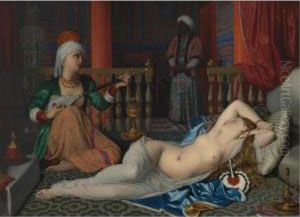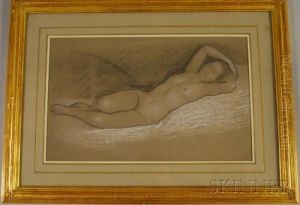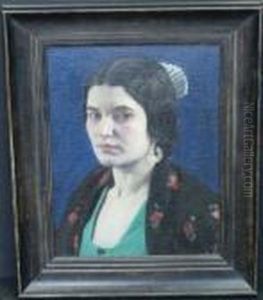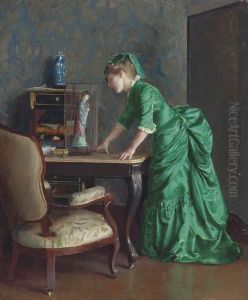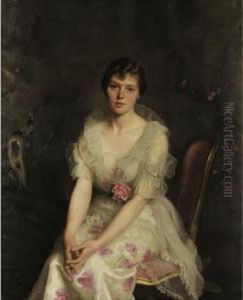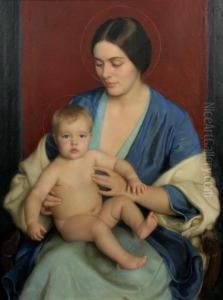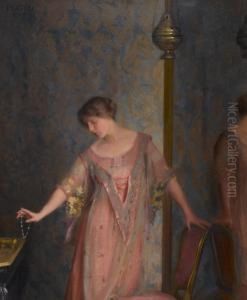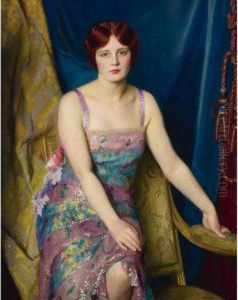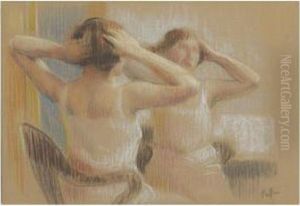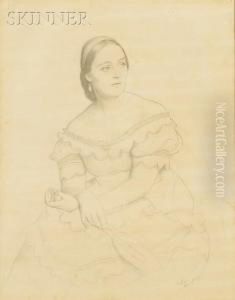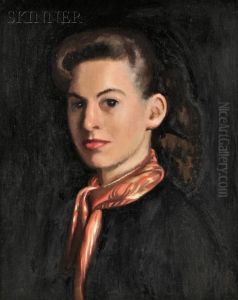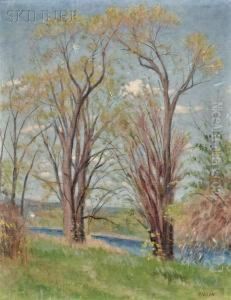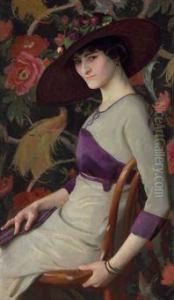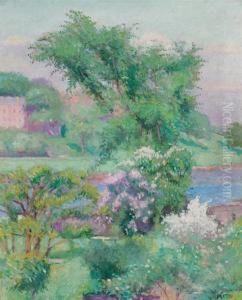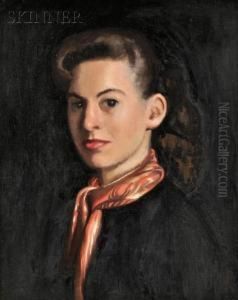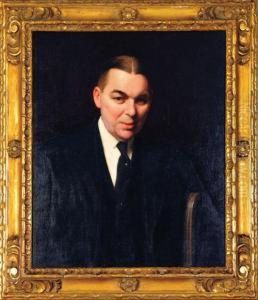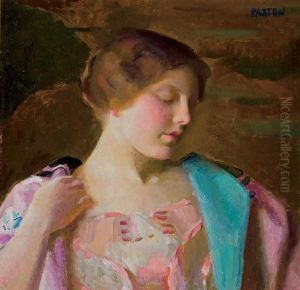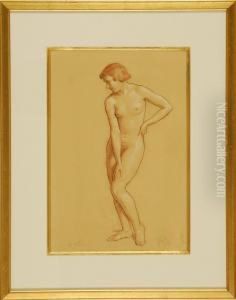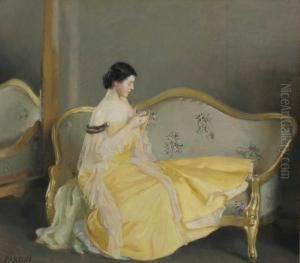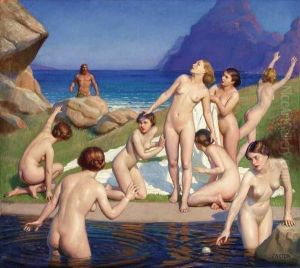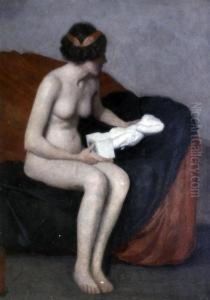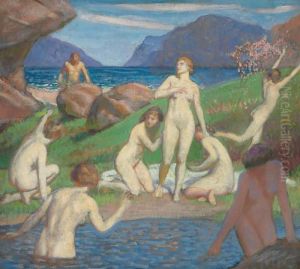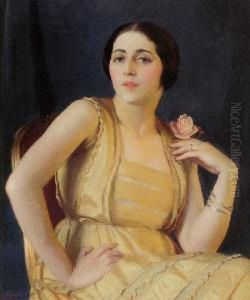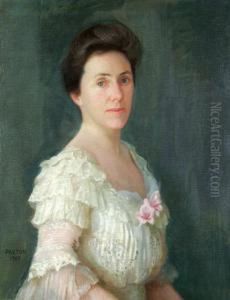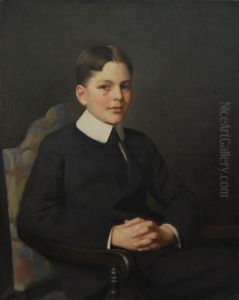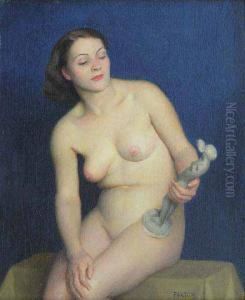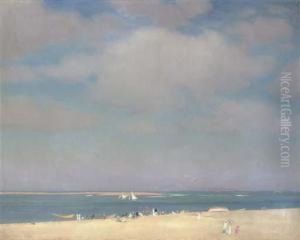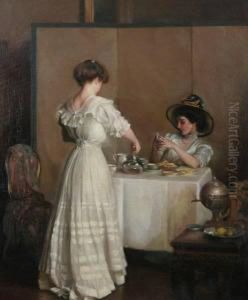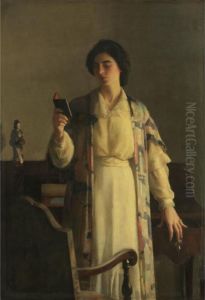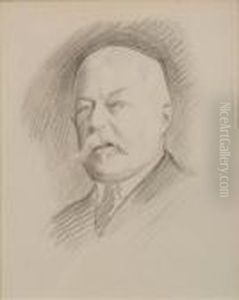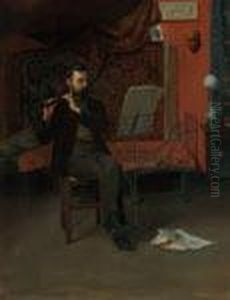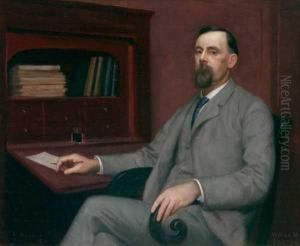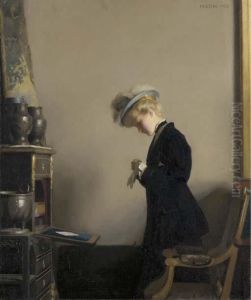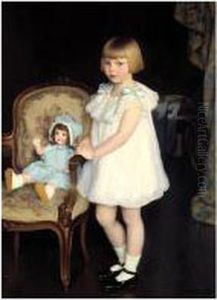William Macgregor Paxton Paintings
William Macgregor Paxton (1869–1941) was an American painter who became known for his portraits and domestic interior scenes. His work is often associated with the Boston School of painting, a group of artists influenced by French academic painting and Impressionism, which focused on figure painting, portraits, and the use of light and color.
Born on June 22, 1869, in Baltimore, Maryland, Paxton showed an early interest in art. He studied at the Cowles Art School in Boston and later went to Paris to train at the École des Beaux-Arts under Jean-Léon Gérôme, a prominent French painter known for his historical and mythological works. Paxton also received instruction from the American painter Dennis Miller Bunker.
After returning to Boston, Paxton became a leading member of the Boston School. He married Elizabeth Okie, who became a frequent subject of his paintings. Paxton was particularly admired for his ability to depict the textures and surfaces of fabrics and materials, as seen in his elegant portraits of women. His technique often involved the use of a 'binocular vision' approach, where the focus was on one particular area of the canvas, with the rest falling away into a softer focus, imitating the way the human eye perceives depth and space.
Throughout his career, Paxton taught at the Museum of Fine Arts, Boston, and was a founding member of The Guild of Boston Artists. He was recognized for his contribution to American art and received numerous awards, including medals at the Pan-American Exposition and the Pennsylvania Academy of the Fine Arts.
Paxton's work captures the genteel society of his time and reflects the influence of Johannes Vermeer, whose work he greatly admired for its clarity and precision. Despite the changing trends in art during his lifetime, Paxton remained committed to the academic style of painting.
He continued to paint and exhibit his work until his death on December 28, 1941, in Newton Centre, Massachusetts. Today, Paxton's paintings can be found in the collections of many major museums, including the Metropolitan Museum of Art in New York and the Museum of Fine Arts in Boston, serving as a testament to his skill and enduring legacy in the world of American art.
